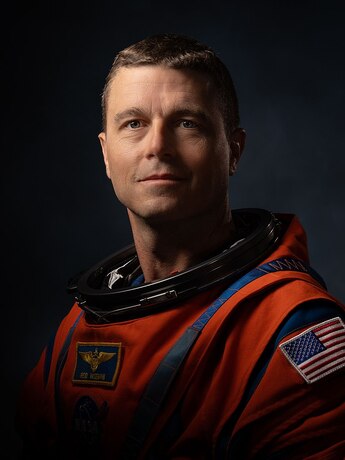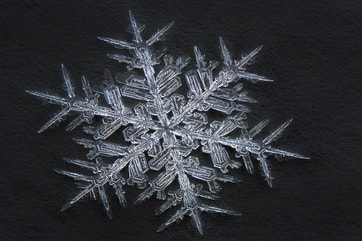 Artemis II is projected to launch in September of 2025. While NASA solves some last minute problems to ensure the safety of the crew going to the moon, learn about the crew's commander, NASA astronaut Reid Wiseman. Gregory Reid Wiseman, born November 11, 1975, earned a degree in computer and systems engineering from Rensselaer Polytechnic Institute and a master's degree in systems engineering from Johns Hopkins University. Before becoming an astronaut, he was a Naval Aviator and served multiple deployments to the Middle East. In 2004, he was assigned to be a Test Pilot for the Navy. He is a highly decorated Naval Captain. Wiseman was deployed to the Middle East when he was selected as an astronaut candidate. As an astronaut, he has been to space as Flight Engineer aboard the International Space Station for Expedition 41 from May through November of 2014. During his mission, Wiseman and his crewmates completed over 300 scientific experiments. On December 18, 2020, Wiseman was selected to be the chief of the Astronaut Office. He served in that position for two years before stepping down in order to return to active flight rotation. On April 3, 2023, he was selected to be the commander for the Artemis II mission. Wiseman's wife Carroll passed away in 2020. He has two teenage daughters and is a go-cart driver.
2 Comments
 Image credit: Mikron86 Image credit: Mikron86 When people say snowflake, they often mean snow crystal. A snow crystal is a single crystal of ice within which the water molecules are lined up in a hexagonal array. That's probably the image you think of when you are thinking of a snowflake. However, the term snowflake is actually a lot more general than that. It can refer to a snow crystal, but it can also refer to almost anything that falls from winter clouds. You may have heard that every snowflake is unique, but why is that? Well, every snow crystal starts when an extremely cold water droplet freezes onto a pollen or dust particle in the sky, forming a small hexagonal plate.. Branches sprout from the corners as it grows larger. As a snow crystal tumbles through the clouds, it experiences different temperatures and humidities, which affect the growth of the snowflake's branches in unique ways. No two snowflakes are the same because no two snowflakes have had the exact same journey through the atmosphere! Contrary to popular belief, most snowflakes are not perfectly symmetrical. The branches will look similar because they have all been through the same changes as they moved through the atmosphere, but irregular snowflakes are much more common than the near-perfect kind. Now that we know a little bit about snowflake science, here's an experiment you can try at home to make your own "snowflake". Borax Snowflake What you'll need:
 *As featured on Fox 13's The Place What you'll need: Balloon Marker Bottle with narrow neck Funnel Baking soda Vinegar Red food dye (optional) Here's how you do it: 1. Draw a heart on the balloon. 2. (Optional step) Use the red food coloring to dye about a cup of vinegar red. 3. Pour vinegar into the bottle. 4. Using the funnel, put a tablespoon or two of baking soda into the balloon. 5. Being careful not to dump any baking soda into the vinegar, stretch the neck of the balloon around the neck of the bottle. 6. Dump the baking soda into the vinegar and watch your heart grow! As we celebrate Black History Month, meet some of the amazing heroes whose contributions advanced space travel! *As featured on KSL Studio 5 Model Heart What you'll need: Mason jar Water Balloons-one large and one small Scissors Rubber bands Two bendy straws Here's how you do it: 1. Fill the mason jar about half full with water. 2. Cut off the neck of the large balloon. Stretch the balloon over the top of the mason jar, securing with rubber bands. 3. Put two small holes in the top of the balloon. 4. Secure the small balloon to the top of one of the straws using a rubber band. 5. Put the straws through the small holes you made in the balloon. 6. Press down on the top of the balloon. Water will come out of the straw that doesn't have a balloon secured on top of it.
Love Potion What you'll need: Baking soda Vinegar Red food coloring (optional) Water Clear bowl Here's how you do it: 1. Using a little water, shape your baking soda into hearts. If you want to, you can put a drop of food coloring in the center of the hearts. 2. Put vinegar in a clear bowl. (Leave some room for the chemical reaction.) 3. Drop your baking soda hearts into the vinegar and watch your love potion bubble!
Dissolving Heart What you'll need: Skittles Warm water Pie plate Here's how you do it: 1. Arrange your skittles into a heart shape on your pie plate. 2. Carefully pour warm water over the skittles and observe as they dissolve.
 *As featured on KUTV2 Fresh Living What you'll need: Paper Lemon juice Q-tips A heat source Here's how you do it: 1. Put a small amount of lemon juice into a cup. 2. Dip your Q-tip into the lemon juice. 3. Draw or write a message to your sweetie using the lemon juice on the end of your Q-tip. 4. Allow your love note to dry for at least 20 minutes. 5. Apply heat. On the show, our director Annika used a heat gun, but you can try any heat source! See if it works better in the oven, next to a candle, or with the high setting on your hair dryer! Let us know how it works for you. |
Archives
July 2024
Categories |
Contact Us |
Follow Us |
© Douglas Space and Science Foundation, Inc. All rights reserved.
Click to set custom HTML
 RSS Feed
RSS Feed
